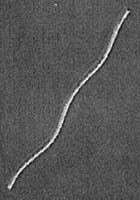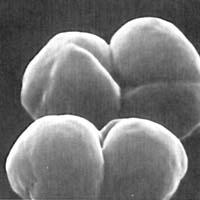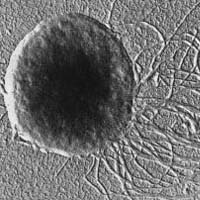Classification (5):
-Main types:
-Main types:
- Crenarchaeota- tolerate extremes in temperature and acidity
- Euryarchaeota- methane-producers and salt-lovers
- Korarchaeota and Nanoarchaeota- not much is known about these
- Methanogens: produce methane as a waste product of their metabolism
- Halophiles: live in salty environments
- Thermophiles- live at extremely hot temperatures
- Psychrophiles- live at unusually cold temperatures
 Methanothermus fervidus, a short bacillus form without flagella (2)
Methanothermus fervidus, a short bacillus form without flagella (2)
Shapes (2):
- Coccus- spherical
- Bacillus- rod-shaped
- Some are triangular or square
Cell Accessories (2):
- flagella- the cell may have one or more flagella attached (when multiple, they are only attached at one side of the cell)
- protein networks- cells are able to anchor together in large groups
Cell Structure (2):
- No internal membranes
- DNA is a plasmid
- In most, a cell wall surrounds the cell membrane; this cell wall is chemically distinct from that of any other organism
- There are 4 fundamental differences between the archaeal cell membrane and those of all other cells:
- Chirality of glycerol
- Ether linkage
- Isoprenoid chains
- Branching of side chains
Nutrition (3):
|
Nutritional Type
|
Source of Energy
|
Source of Carbon
|



